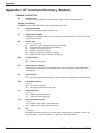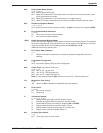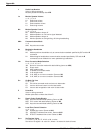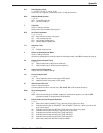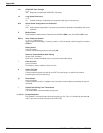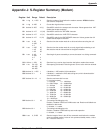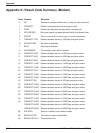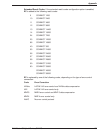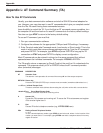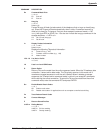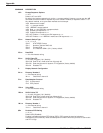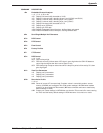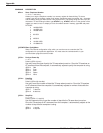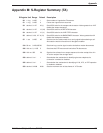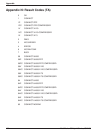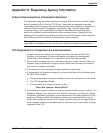
160 MultiModemISI Hybrid Series, ISIHI-2S
Appendix
Appendix L: AT Command Summary (TA)
How To Use AT Commands
Usually, your data communication software controls the ISIHI-2S terminal adapters for
you. However, you may also want to use AT commands,which give you complete control
over the TAs. Be careful using these commands because
loose its ability to control the TA. If you find that an AT command causes a problem, turn
the computer off and then back on to reset AT commands to the factory default settings.
You also can type AT&F to return to the factory default setting.
To use an AT command, you must first:
1. Run your communication software.
2. Configure the software for the appropriate COM port and IRQ settings, if necessary.
3. Enter Terminal mode (aka Command mode, Local mode, or Direct mode). This is the
mode in which most data comm software packages start up. Type the AT command
and press ENTER. For example, type ATH0 and press ENTER to hang up the TA
connection or AT&V and press ENTER to display current configuration.
Most AT commands can be entered in strings (on the same command line) without
spaces between the individual commands. For example: AT&VH0 <ENTER>.
The TA usually returns a response (or Result Code) at the next line if it understands the
command. The response usually is OK or ERROR unless the AT command provides
other (extended) messages.
COMMAND DESCRIPTION
AT Attention Code
The attention code precedes all command lines except A/ and the escape sequence.
RETURN Return key
Press the RETURN (ENTER) key to execute most commands (sometimes abbreviated <cr>).
+++AT<cr> In-Band Escape Code
TA enters command mode (without disconnecting the call) when online with a remote device.
<break>AT<cr> Out-of-Band Escape Code
TA enters command mode while remaining online.
A
Answer Call
Forces the TA to answer an incoming call. To cause the TA to autoanswer, set register
S0
to a value higher than 0.
D
Dial
Causes TA to dial a telephone number (e.g., ATD785-3500 <cr>).
DSn
Dialing a Stored Telephone Number
n
= 0–9
To dial a stored telephone number, type
ATDSn
in terminal mode, where
n
is the location of the
number you want to dial. For example, typing ATDS6 <cr> dials a telephone stored in memory
register 6 location.



